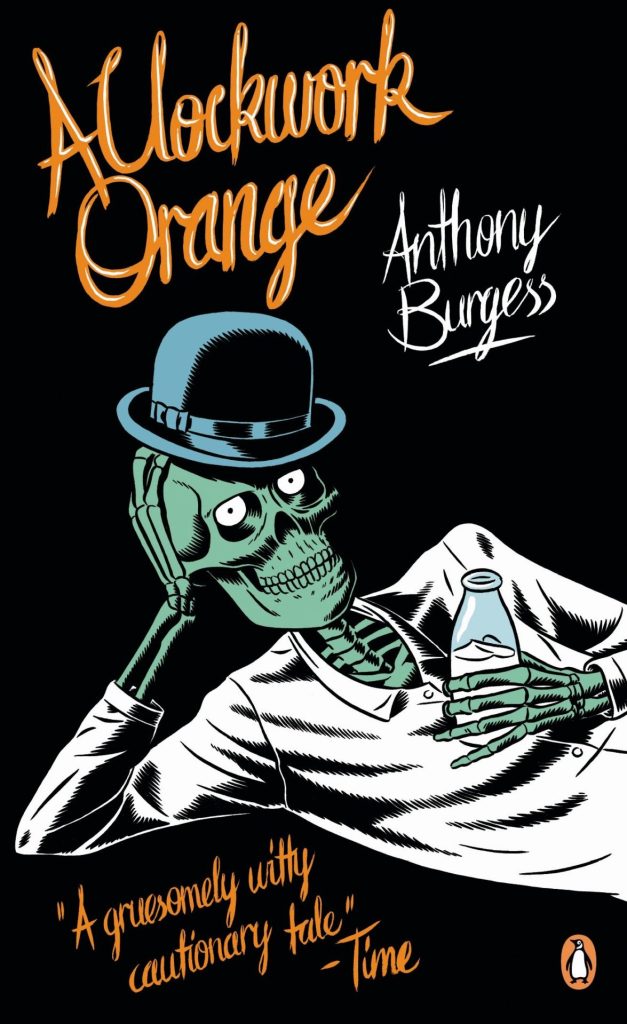Review: The Morally Complex A Clockwork Orange by Anthony Burgess

Disclaimer
This post may contain affiliate links. I will make a small commission if you make a purchase through one of these links, at no extra cost to you. See full disclosure and disclaimer policy HERE.
Have you ever stumbled upon a literary masterpiece that left you both intrigued and contemplative? Well, hold on to your seats because we’re about to delve into the captivating world of “A Clockwork Orange” by Anthony Burgess. Strap in as we navigate through the perplexing depths of human nature, ethics, and the boundaries of societal control in this thought-provoking novel.
Table of Contents
Plot Summary | Spoiler Alert |
In the dystopian world of A Clockwork Orange by Anthony Burgess, the story follows the life of Alex, a young man with a penchant for violence and classical music. Set in a gritty urban landscape, the novel delves into the complexities of human nature, ethics, and societal control.
Alex, along with his gang of “droogs,” engages in a series of violent and criminal activities, indulging in a life of hedonism and chaos. The novel’s narrative style immerses readers in Alex’s mind, allowing us to experience his thoughts and emotions first-hand. His unique slang, known as “Nadsat,” adds a layer of linguistic complexity to the story.
As the narrative unfolds, Alex’s criminal escapades escalate, leading to his eventual capture by the authorities. The government offers him an opportunity for rehabilitation through an experimental procedure known as the “Ludovico Technique.” This technique aims to condition Alex to associate violence with intense nausea, effectively “curing” him of his criminal tendencies.
The remainder of the novel explores the consequences of Alex’s rehabilitation. Stripped of his free will and ability to choose, Alex becomes a pawn in the hands of the government’s control. The once-violent youth is now unable to defend himself, a fact that exposes him to new forms of exploitation and manipulation.
As the story progresses, the novel raises thought-provoking questions about the nature of morality, the limits of personal agency, and the role of government in shaping individual behaviour. The narrative takes unexpected turns, challenging both Alex and the reader to reconsider their assumptions about human nature and the boundaries of societal intervention.
Intriguing and morally complex, A Clockwork Orange invites readers to reflect on the intricate interplay between individual choice and the influence of society, all within the backdrop of a world that blurs the lines between right and wrong.
A Rollercoaster of Emotions and Ideas
From the very first page, A Clockwork Orange grabs you by the collar and thrusts you into a realm of chaos and uncertainty. Burgess, with his unique narrative style, immerses readers in the mind of Alex, a young delinquent with a penchant for violence and classical music.
The novel takes us on a wild ride, addressing the age-old question of whether morality can be forced upon an individual. The burstiness of emotions – from shock to empathy – keeps us engaged, much like the unpredictable twists in a rollercoaster ride.
The Labyrinth of Morality
Here’s where it gets intriguing. As we follow Alex’s journey, we’re confronted with ethical dilemmas that push us to ponder the very essence of morality. Burgess ingeniously challenges us to consider if a person stripped of free will, like a clockwork automaton, can truly be considered moral even if they appear to be so.
This perplexing exploration mirrors the complexities of our own world, leaving us wondering about the thin line between choice and conditioning.
A Dance of Language
Burgess’s use of language is a masterclass in itself. The invented slang, “Nadsat,” spoken by Alex and his gang, adds another layer of depth to the narrative. It’s like deciphering a secret code, inviting us to actively engage with the text. This linguistic burstiness not only keeps us on our toes but also reflects the chaotic nature of the society depicted in the book.
Society’s Iron Grip and Personal Autonomy
Imagine a society so desperate to quell its violence that it resorts to manipulating an individual’s desires and instincts. A Clockwork Orange sparks discussions about the power of authority and the right to personal autonomy.
The book’s active voice urges us to ponder whether it’s ethical for a society to impose its version of ‘right’ onto an individual, even if it erases their capacity to choose ‘wrong.’
RELATED:
20 Best Classic Science Fiction Books That Shaped the Genre
Conclusion
In the end, A Clockwork Orange isn’t just a book; it’s a thought journey that twists and turns through the landscapes of morality, free will, and societal control. Like a rollercoaster, it jolts us, making us question, introspect, and debate.
Burgess’s brilliance lies not only in his storytelling but also in his ability to ignite conversations that transcend the pages. So, if you’re ready to be captivated and challenged, grab a copy and embark on this whirlwind adventure.











